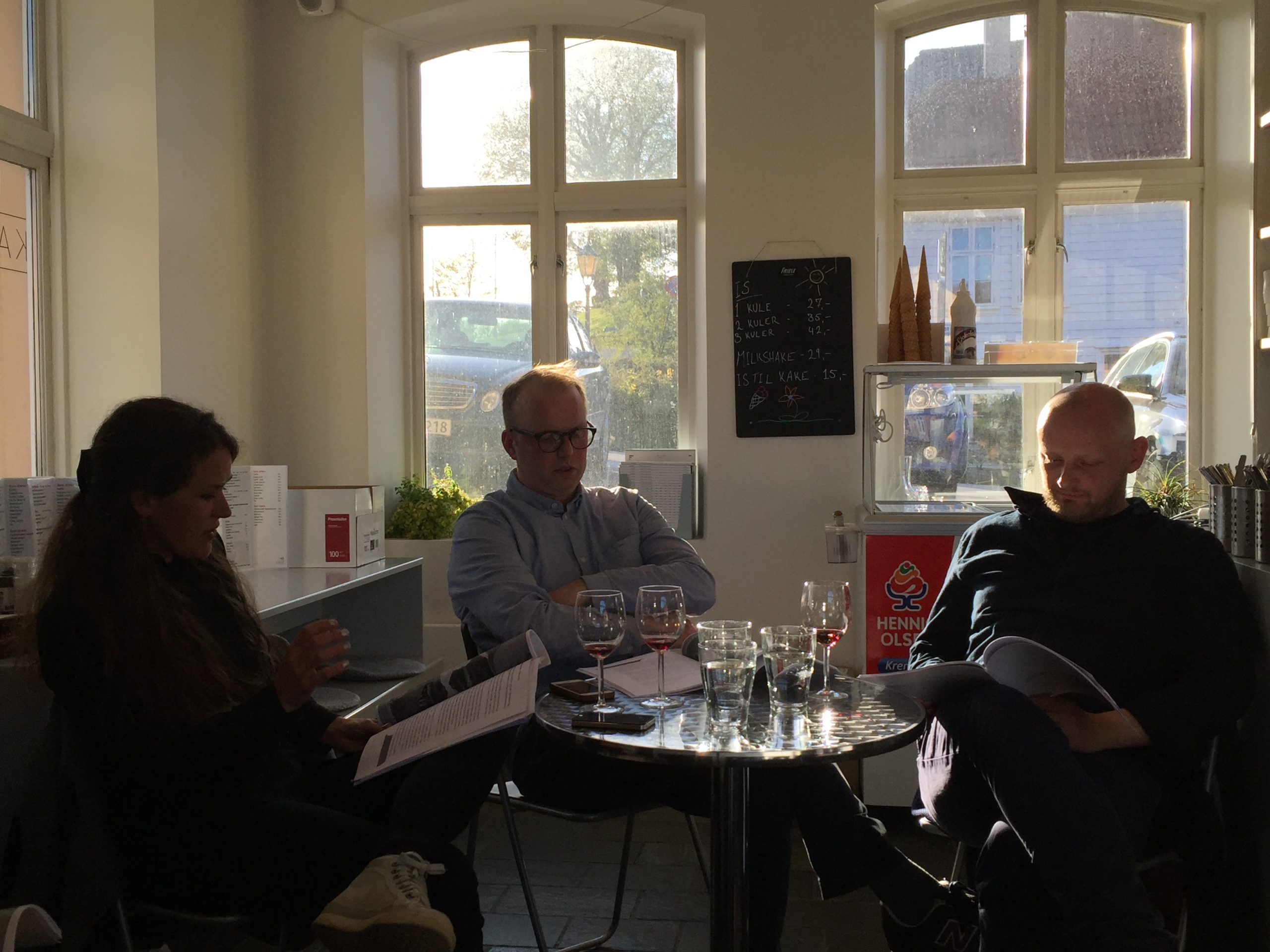RAD
Published
RAD (‘ROW’) (2011 – 2015) was a series of one-night events where artists, researchers and performers were selected and put together into a multimedia context that could shed light on complex issues and themes. For the series, the arenas were chosen based on the theme of each event, preferably places that reinforced the artistic exploration. Eventually, a vinyl LP and a fanzine were also released as part of the “row”. The events and releases were a laboratory for radically exploring surprising artistic cross-connections and new display formats. With RAD, the desire was to dissolve ideas about visual art, music, performing arts, literature and academia as separate fields. The project sheds light on BEK’s role as a driving force for such interdisciplinary experiments and collaborations. Although RAD did not concern technology or electronic art specifically, the series follows a utopian undercurrent in the technology discourse where technology will break down all boundaries between institutions, genres, and high and low. This up-opening character creates a place for new ideas and associations.
RAD also built on an idea of ‘the composite audience’. Since the events were multidisciplinary, and with a conscious choice of different disciplines, they could be spread and sought out by a composite audience. In short, a motley crew. This became especially clear in RAD #3 NULLDOKUMENTET in Bergen District Court, where judges, artists, performing artists, contemporary musicians, students, university staff and others made up the audience. The courtroom is hierarchically structured with the main judge in the middle in front, and the prosecution and so on spread down to the audience benches. The audience was encouraged to break the pattern and choose for themselves where they wanted to sit, whether this was in the judge’s or defendant’s place.
The RAD series was curated and carried out by Anne Marthe Dyvi and Espen Sommer Eide for BEK.
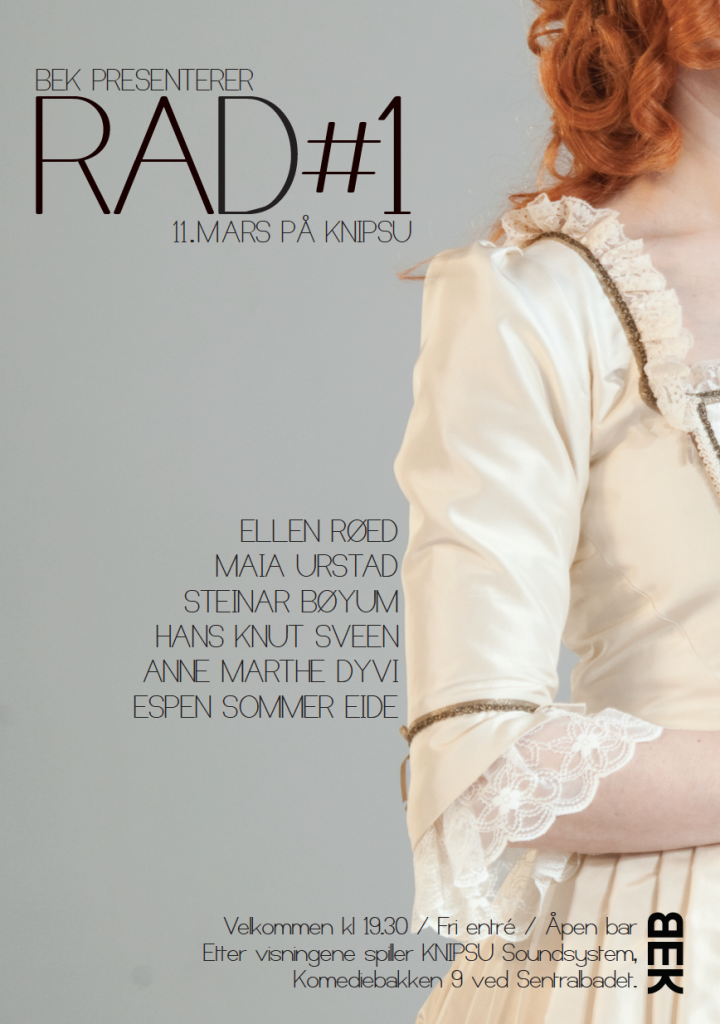
RAD #1 Seriebegrepet
11 March 2011 at Knipsu
RAD # 1 was a presentation, installation, lecture and concert at Knipsu, a space for contemporary art in Bergen. The philosopher Steinar Bøyum reflected on the series concept in literature and philosophy, based on the raw laughter of the 15th century author Rabelais. Espen Sommer Eide presented the sound of dead languages. Ellen Røed showed a performance for science, sarabande and harpsichord, and Maia Urstad performed the radio concert 23 Uhr in Deutschland…….. . After the performances, Knipsu Soundsystem played music and the bar was open.
About Rabelais, Kjartan Fløgstad says: “The raw laughter of Rabelais proclaims that it is in the ‘depths of the people’ that we find the most fundamental wisdom.” When we place Rabelais’ texts and their interpretations in an art space, and push the text up against art, this is, on the one hand, to say that art is about human relation to the world, and, on the other hand, to point out that science is merely an expression.
Contributors: Ellen Røed, Espen Sommer Eide, Maia Urstad, Steinar Bøyum, Anne Marthe Dyvi, Hans Knut Sveen and Knipsu Soundsystem.

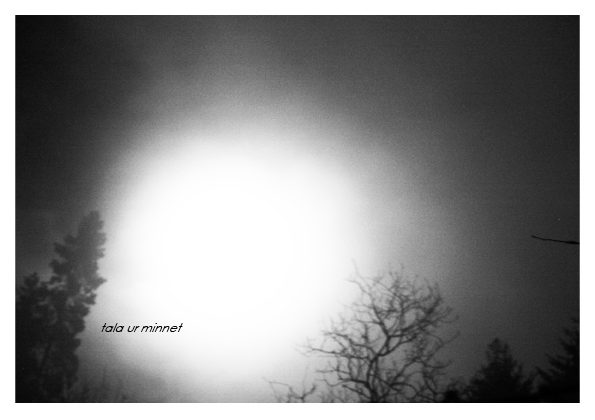
RAD #2 Tala ur minnet
11-12 June 2011 in Knut Vaage’s composer’s cabin
For RAD #2, a selection of artists and musicians were invited to improvise together in Knut Vaage’s composer’s cabin in Sunde in Kvinnherad. In the cabin, Vaage composes his music, and finds peace to think. The composer’s cabin is located on the farm where his grandfather, farmer and author Ragnvald Vaage wrote fiction from the first part of the 20th century until his death in 1966. Knut Vaage is a composer and pianist who actively works across genres and disciplines. During RAD #2, Ragnvald Vaage’s poems were read at the poet’s favorite places in the nature around the property. Audiences and performers spent the night in the composer’s cabin, in tents in the garden and with neighbors around. Food was prepared for common meals for everyone in the spartan cabin.
Contributors: Knut Vaage, Chris Delancourt, Signe Lidén, Alog by Espen Sommer Eide and Dag-Are Haugan, Sigbjørn Apeland, and Anne Marthe Dyvi.
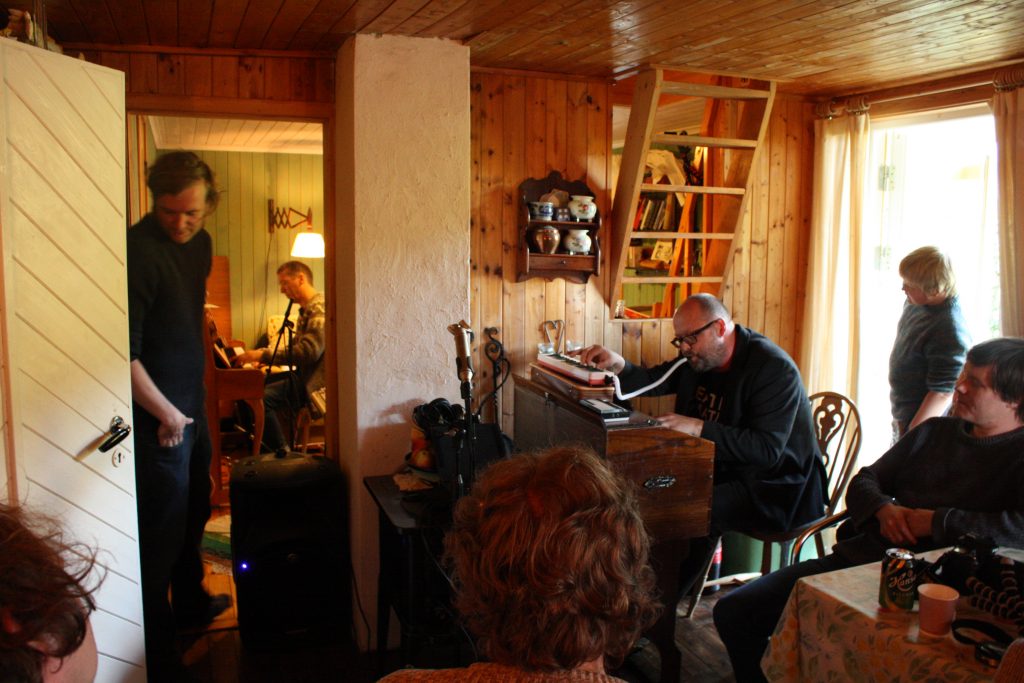
RAD #3 NULLDOKUMENTET
18 November 2011 in Bergen Tingrett
A ‘nulldokument’ (‘zero document’) is the term for a document in public administration which for various reasons has been exempted from the parties of interest’s access. The documents often contain sensitive personal information and/or anonymous tips, but there may also be information that is obviously not relevant to the case. In many cases, ‘nulldokument’ have not been recorded but have been archived in a separate folder.
In the judiciary we find the literature, in the literature we find the judiciary. They confirm each other with their similar methods and tools, and are joint in portraying society, but with different status among the citizens. The judiciary is truth; justice. The literature is the possibilities; where the claims are interpreted to reach an approximate truth. In this way, different truths come to light.
The ‘nulldokument’ is a picture of the omitted, the invisible, the misinterpreted and the constructed. In RAD #3, literature, dramaturgy and fiction were presented in the courtroom, and testified that the individual’s relationship to the law and the judiciary is relevant in our understanding of these institutions. We, the citizens, make up society and the judiciary is our common institution; it is not something that takes place outside ourselves (as long as we avoid breaking the law).
Contributors: Bjørn Ekeland (lecture), Julie Lillelien Porter (photography), Trine Falch (performance), Nicholas Møllerhaug (audio play), Alwynne Pritchard, Thorolf Thuestad and Claire Zakiewicz (performance).
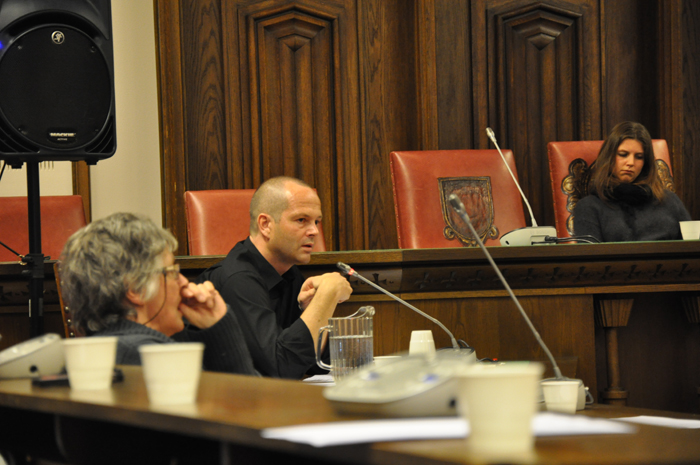
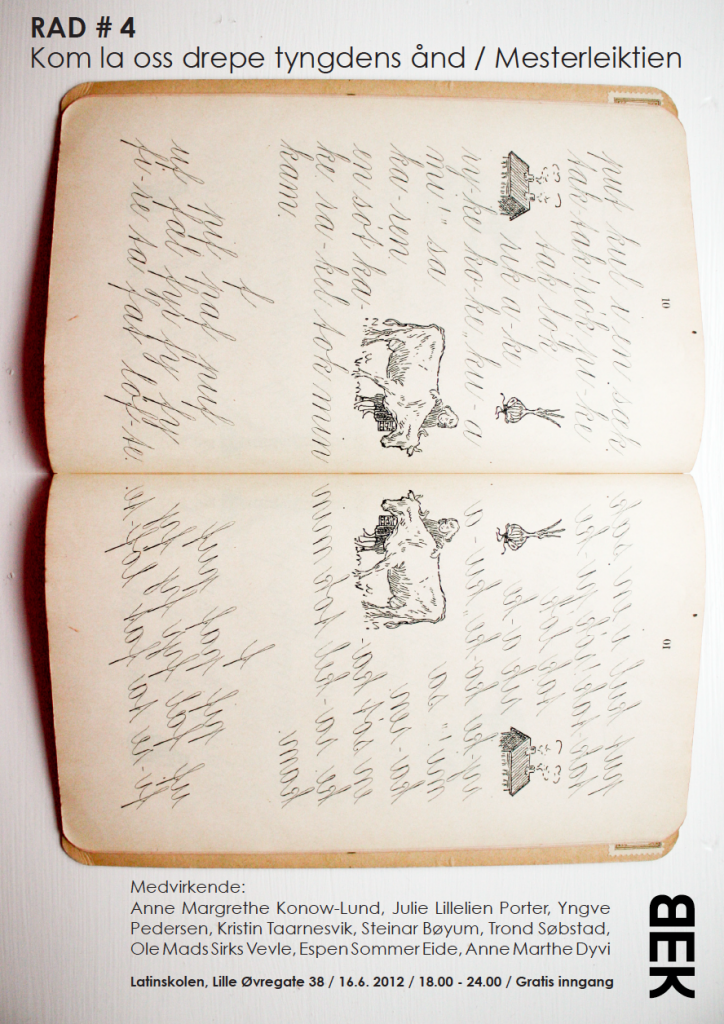
RAD #4 Kom la oss drepe tyngdens ånd / Mesterlektien
16 June 2012 in Latinskolen/Skolemuseet
RAD #4 was a six-hour programme with readings in Mesterlektien (the Master Lesson) in Latinskolen (the Latin School) from 1706. The texts were selected by invited readers, and the selection was composed into a composition of readings, lectures, sound, music, food, performative grips, poetry and film.
The philosopher Augustine describes in his “Confessions” the first man to practice “silent reading” – the monk Ambrose. This revolutionary discovery – to read inside – changed our relationship to text, knowledge and learning forever. A sense of rupture arises in Ambrose between the silent reading and the reading aloud. Texts before Ambrose’s time were written without spaces between the words, like long chains of letters. In silence, the words and letters flow into each other, the world appears foreign and abandoned, but then, as you open your mouth and speak out, the text takes shape and becomes alive. The relationship to the written word is important to people. The time the word was written in, and the time the word is read, together form the meaning. The space between time and history is preserved in the book, as the relic of the knowledge society. Reading aloud as a form, and listening as an activity, is a like a channel between the body and the soul, and between the individual and society. In RAD #4, these phenomena were studied in Mesterlektien through joint contemplation and experimentation. An ode to the written word is the read word.
Contributors: Anne Margrethe Konow-Lund, Julie Lillelien Porter, Yngve Pedersen, Kristin Taarnesvik, Steinar Bøyum, Trond Søbstad, Ole Mads Vevle, Espen Sommer Eide, and Anne Marthe Dyvi.
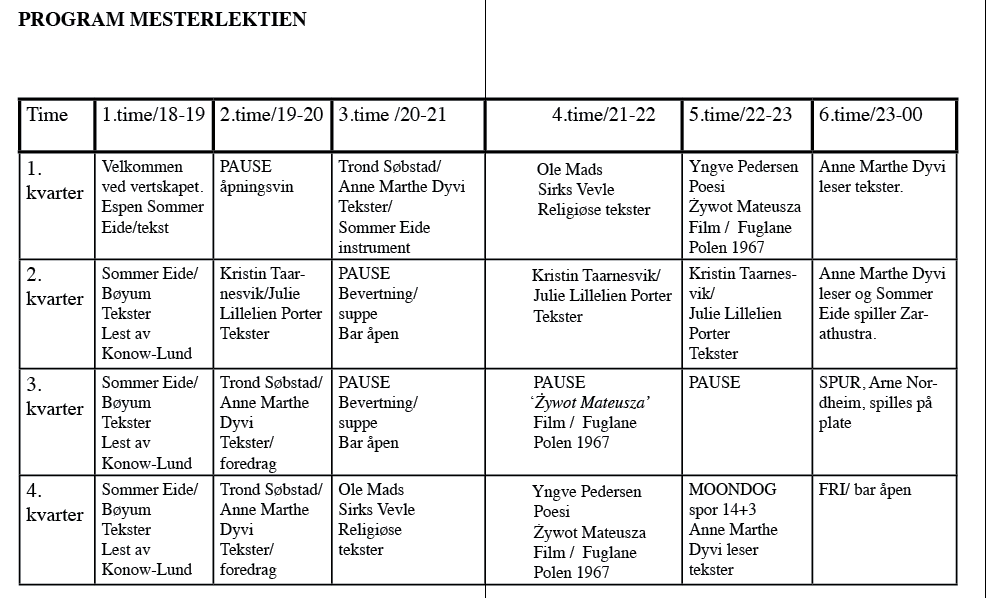
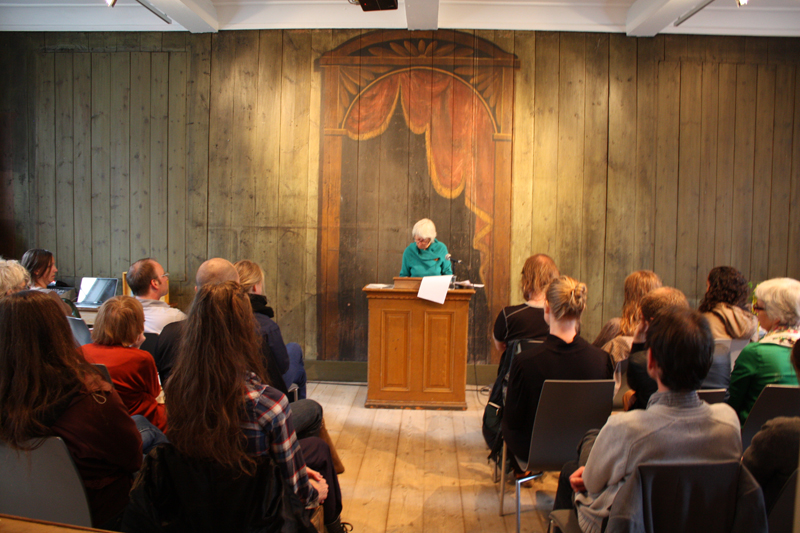
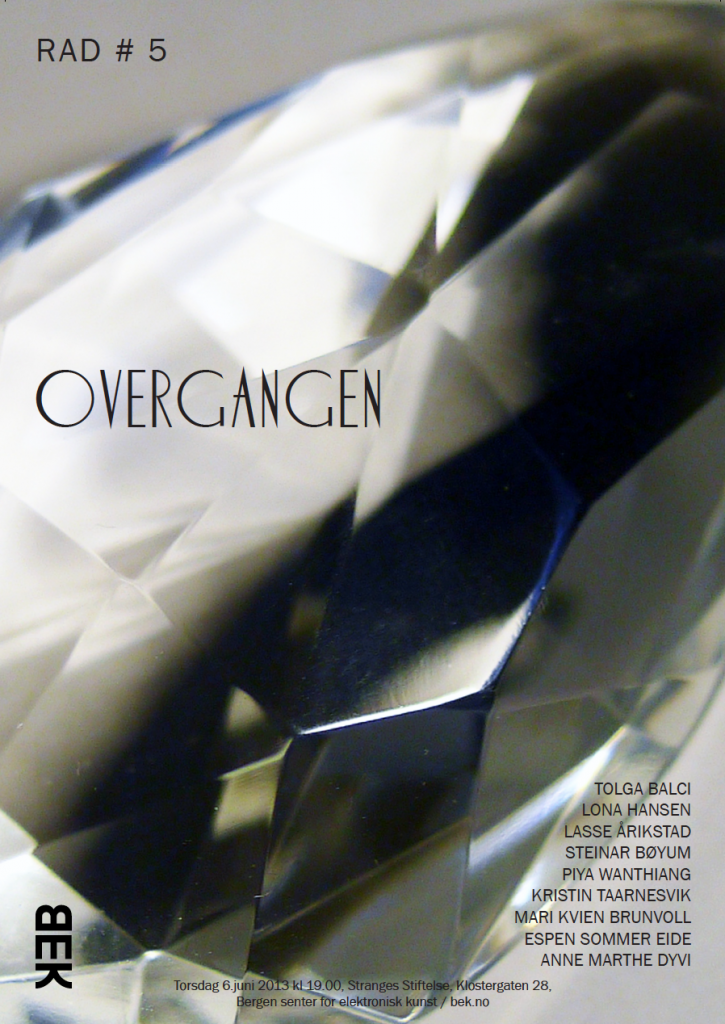
RAD #5 Overgangen
16 June 2013 in Fortidsminneforeningen, Stranges Stiftelse
The object became the surface, the light was given to the darkness, the silence reflected the sound. Overgangen (The Transition) was an exploration of the path between black and white, between light and darkness. We locked ourselves inside one of Bergen’s historic chambers and draped the windows.
The performance Systematismens 1. borg was a silent construction of historical printing plates used in the weed biologist Emil Korsmos’ (1864-1929) textbooks. The systematism’s pioneer Korsmo created a new economy in agriculture by classifying and measuring the value of useful and useless plants. The construction was accompanied by sound. The philosopher Steinar Bøyum lead us through the philosophy behind collections, and to collectors gone on a journey. During the evening, everything three-dimensional announced transition to the two-dimensional. The height, width and depth relationship was in motion. A silent film remained. Food was served in format.
Contributors: Mari Kvien Brunvoll, Lasse Årikstad, Lona Hansen, Kristin Taarnesvik, Steinar Bøyum, Piya Wanthiang, Tolga Balci, Espen Sommer Eide, and Anne Marthe Dyvi.
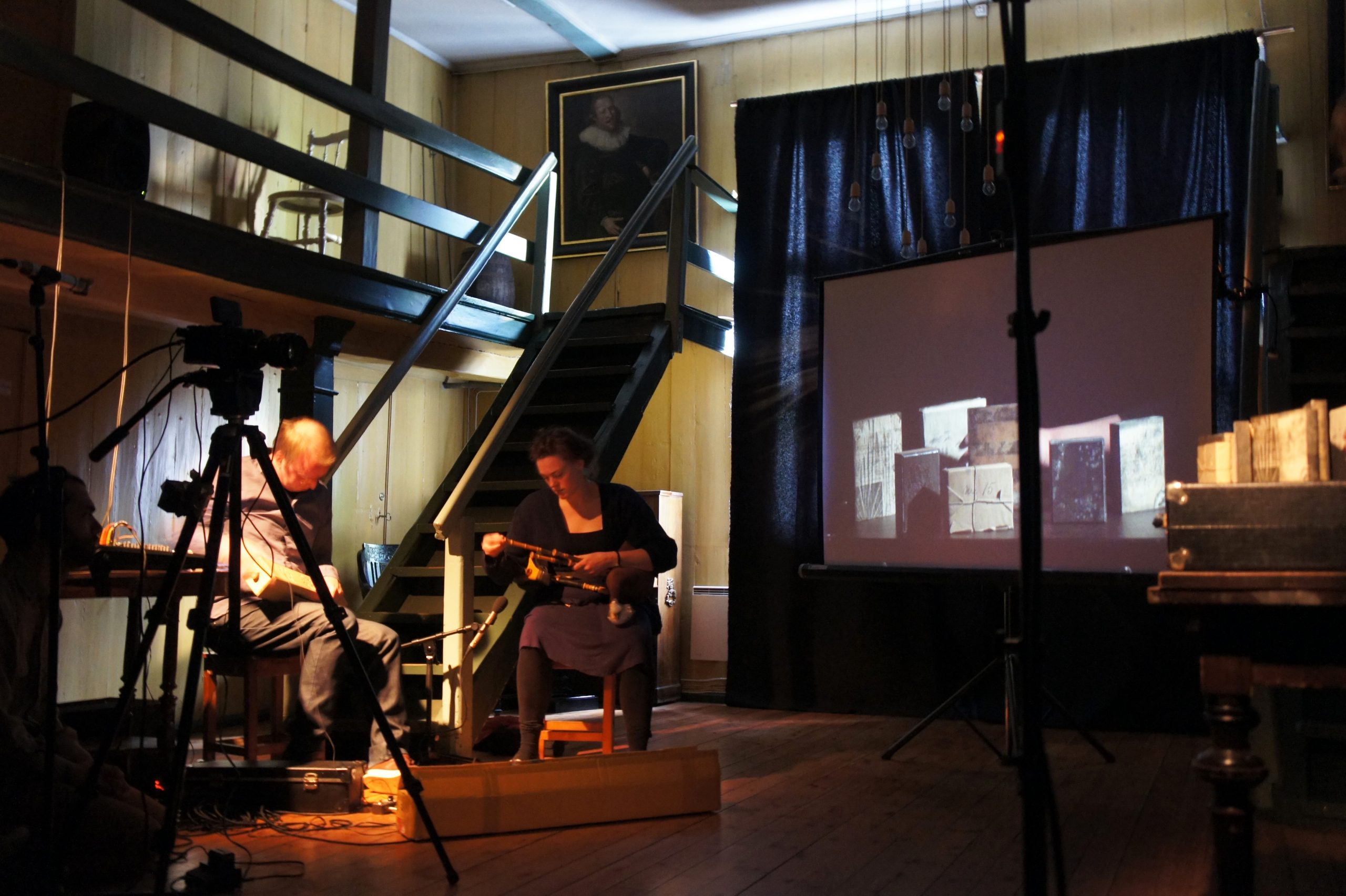
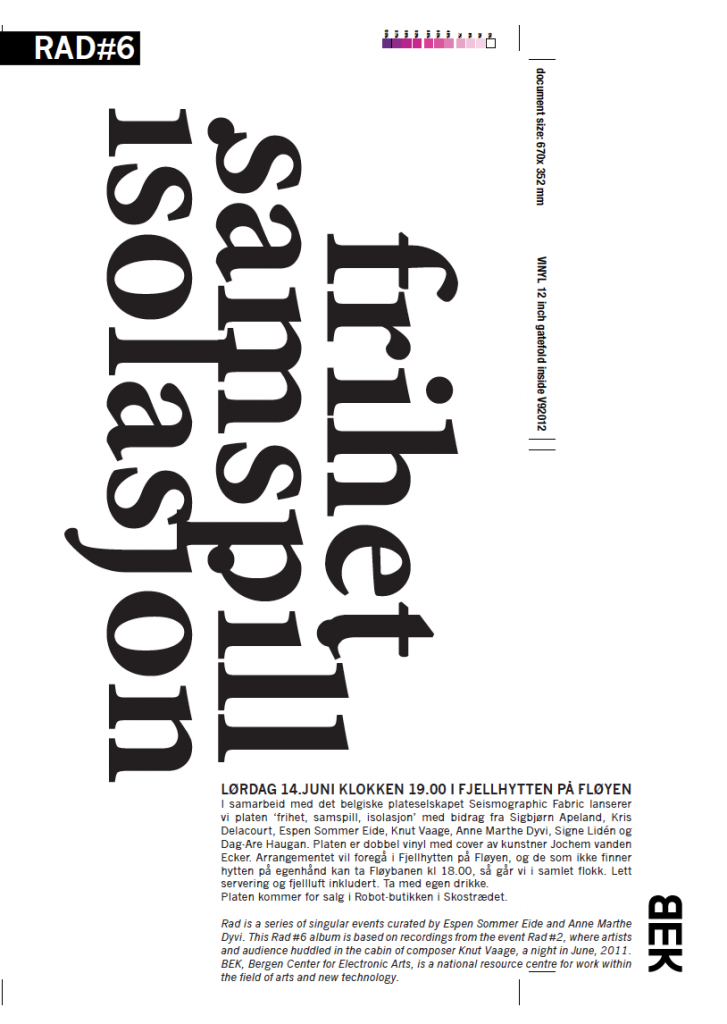
RAD #6 frihet samspill isolasjon
14 June 2014 at Fjellhytten
In collaboration with the Belgian record company Seismographic Fabric, the record frihet, samspill, isolasjon (freedom, interaction, isolation) was launched as RAD #6 at Fjellhytten on mount Fløyen. The LP record is based on a series of recordings made during RAD #2 (2011), when artists and musicians were gathered in Knut Vaage’s composer’s cabin. The LP features contributions from Sigbjørn Apeland, Kris Delacourt, Espen Sommer Eide, Knut Vaage, Anne Marthe Dyvi, Signe Lidén and Dag-Are Haugan. It is double vinyl with a cover by artist Jochem vanden Ecker, and came after the launch for sale in the Robot store in Skostrædet.




RAD #7 NORSK RETORIKK
15 May 2015 at Hordaland Art Centre
Yes, we love rhetoric! We are captured by it, imprisoned by it. We cannot breathe, but it is delicious and beautiful like Japanese Kinbaku bondage. Norway is a young nation, we unfortunately found the oil before we had developed any tradition of truth. I hear myself repeating the arguments: We must drill for the sake of the environment. Norwegian gas is good for the climate. By extracting new fields in the north, we create economic growth in the global south. It sounds suspicious, but isn’t it also true in a way? Large hyper-sizes are set up against each other. I can ‘t think clearly. Better to keep quiet. Maybe applaud the good media management. I love good media management.
NORSK RETORIKK (Norwegian Rhetorics) started with a call to 50 researchers, artists, philosophers, writers and others expressing their opinions. We invited the contributors to send us material for a rhetorical manual, NORSK RETORIKK. The appeal was sent out due to an experience of having grown up in a rhetorically misleading culture.
NORSK RETORIKK was launched with reading aloud. The reader of the pamphlet is encouraged to photo copy it at their local institution, and distribute it further in their fax network or using the Internet. NORSK RETORIKK is also available as a digital copy by clicking here.
Contributors: Julie Lillelien Porter, Steinar Bøyum, Maia Urstad, Ellen Røed, Trond Søbstad Trine Falch, Berit Kristoffersen, Jens E. Kjeldsen, Signe Lidén, Siri Austeen, Margrethe Brekke, Kristin Tårnes, Cecilia Johnsson, HC Gilje, Hilde M. Methi, Joar Nango, Kristin Taarnesvik, Bo Krister Wallström, Mona Solhaug, Margrethe Pettersen, Geir Backe Altern, Cecilie Bjørgås Jordheim, Geir Tore Holm, Vilde Salhus Røed, Leif Christian Jensen, Amund Sjølie Sveen, Morten Strøksnes, Gabriel Kvendseth, El Draco, Magnhild Øen Nordahl, Ebba Moi, Rita Marhaug, Apichaya Wanthiang, Anja Ulset, Lisa Him-Jensen, Arne Skaug Olsen, Toril Johannessen, Farida Nilsen, Bjørn Mortensen, Jonas Ib F. H. Jensen, Åse Løvgren, Morten Torgersrud, Silje Figenschou Thoresen, Yngve Pedersen, Sissel Lillebostad, Arne Rygg, Heidi Nikolaisen, Ane Hjort Guttu, Anne Szefer Karlsen, Søssa Jørgensen og Veronica Rebecca Johansen-Olsson.
